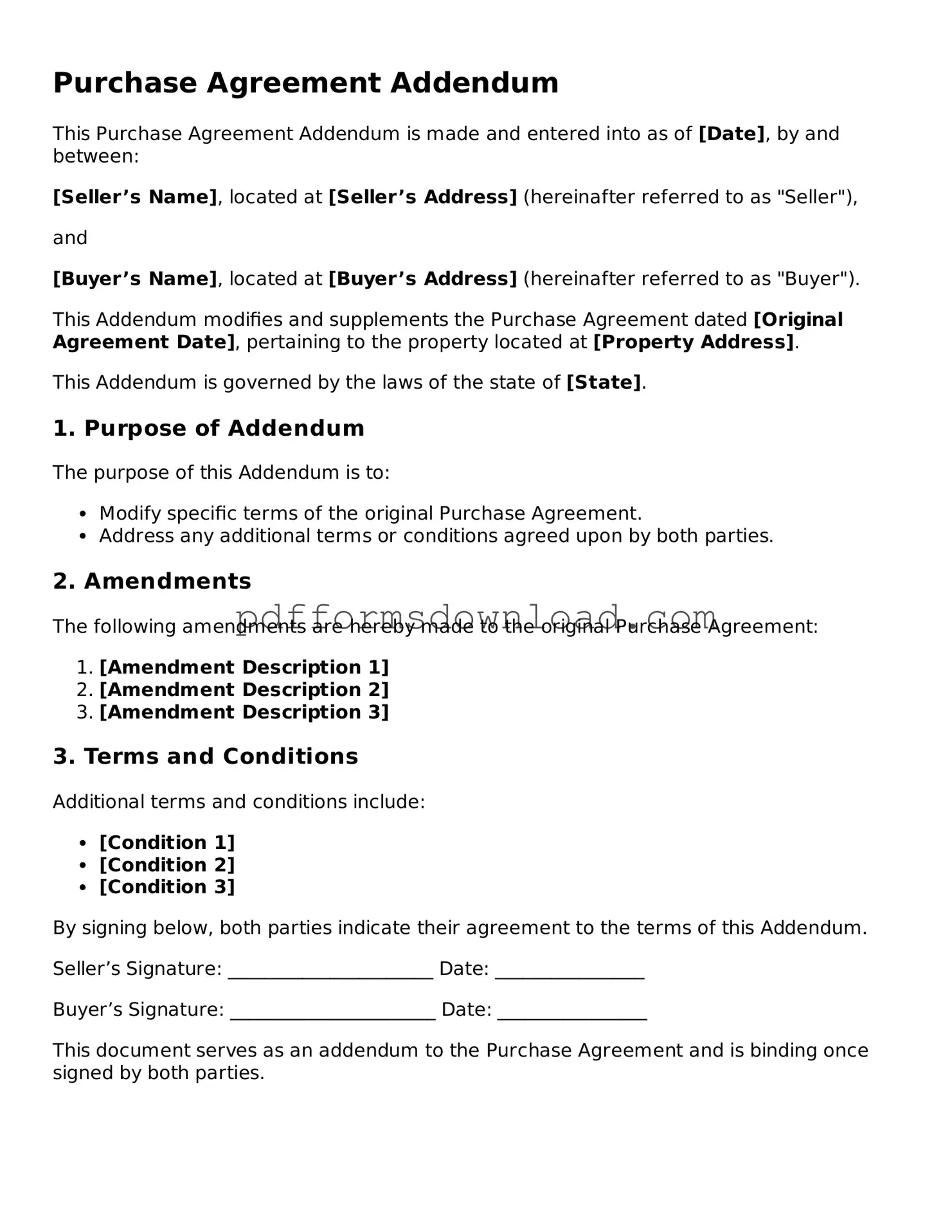What is a Purchase Agreement Addendum?
A Purchase Agreement Addendum is a document that modifies or adds to an existing purchase agreement. This addendum can address various aspects of the transaction, such as changes in price, terms, or contingencies. It serves to clarify the agreement between the buyer and seller, ensuring that both parties are on the same page regarding any adjustments made to the original contract.
When should I use a Purchase Agreement Addendum?
You should consider using a Purchase Agreement Addendum whenever there are changes or additional terms that need to be documented after the initial agreement has been signed. Common situations include extending the closing date, altering the purchase price, or adding contingencies related to inspections or financing. It is important to formalize these changes to protect the interests of both parties and avoid potential misunderstandings in the future.
How do I create a Purchase Agreement Addendum?
Creating a Purchase Agreement Addendum typically involves outlining the specific changes or additional terms in clear language. Start by referencing the original purchase agreement and identifying the sections that are being modified. Clearly state the new terms or conditions, and ensure that both parties review and sign the addendum. It is advisable to consult with a legal professional to ensure that the document meets all necessary legal requirements and adequately protects your interests.
Is a Purchase Agreement Addendum legally binding?
Yes, a Purchase Agreement Addendum is legally binding once it is signed by both the buyer and seller. It becomes an integral part of the original purchase agreement, and both parties are obligated to adhere to the terms outlined in the addendum. To ensure its enforceability, it is crucial that the addendum is clear, concise, and properly executed. Consulting with a legal advisor can provide additional assurance that your addendum is valid and enforceable.
